

Promising MLPerf™ Inference 3.1 Performance of Dell PowerEdge XE8640 and XE9640 Servers with NVIDIA H100 GPUs
Wed, 04 Oct 2023 20:54:55 -0000
|Read Time: 0 minutes
Abstract
The recent release of MLPerf Inference v3.1 showcased the latest performance results from Dell's new PowerEdge XE8640 and PowerEdge XE9640 servers, and another submission from the PowerEdge R760xa server. The data underscores the outstanding performance of PowerEdge servers. These benchmarks illustrate the surging demand for compute power, with PowerEdge servers consistently emerging on top across various models, claiming numerous top titles. This blog examines the expected performance for image classification, object detection, question answering, speech recognition, medical image segmentation and summarization, focusing specifically on the capabilities of the PCIe and SXM form factor NVIDIA H100 Tensor Core GPUs in the new generation PowerEdge systems.
Overview of top title results
The PowerEdge XE8640 and XE9640 servers won several #1 titles.
For instance, the PowerEdge XE8640 server emerged as a winner in all benchmarks in the data center suite such as image classification, object detection, question answering, speech recognition, medical image segmentation, and summarization relative to other systems having four NVIDIA H100 SXM GPUs. The PowerEdge XE9640 server received #1 titles for all benchmarks previously mentioned relative to other liquid-cooled systems having four NVIDIA H100 SXM GPUs.
Comparison from the previous rounds of submission
The following figure shows the improvement customers can derive by using the new generation PowerEdge XE8640 and XE9640 servers from our previous generation PowerEdge XE8545 server.
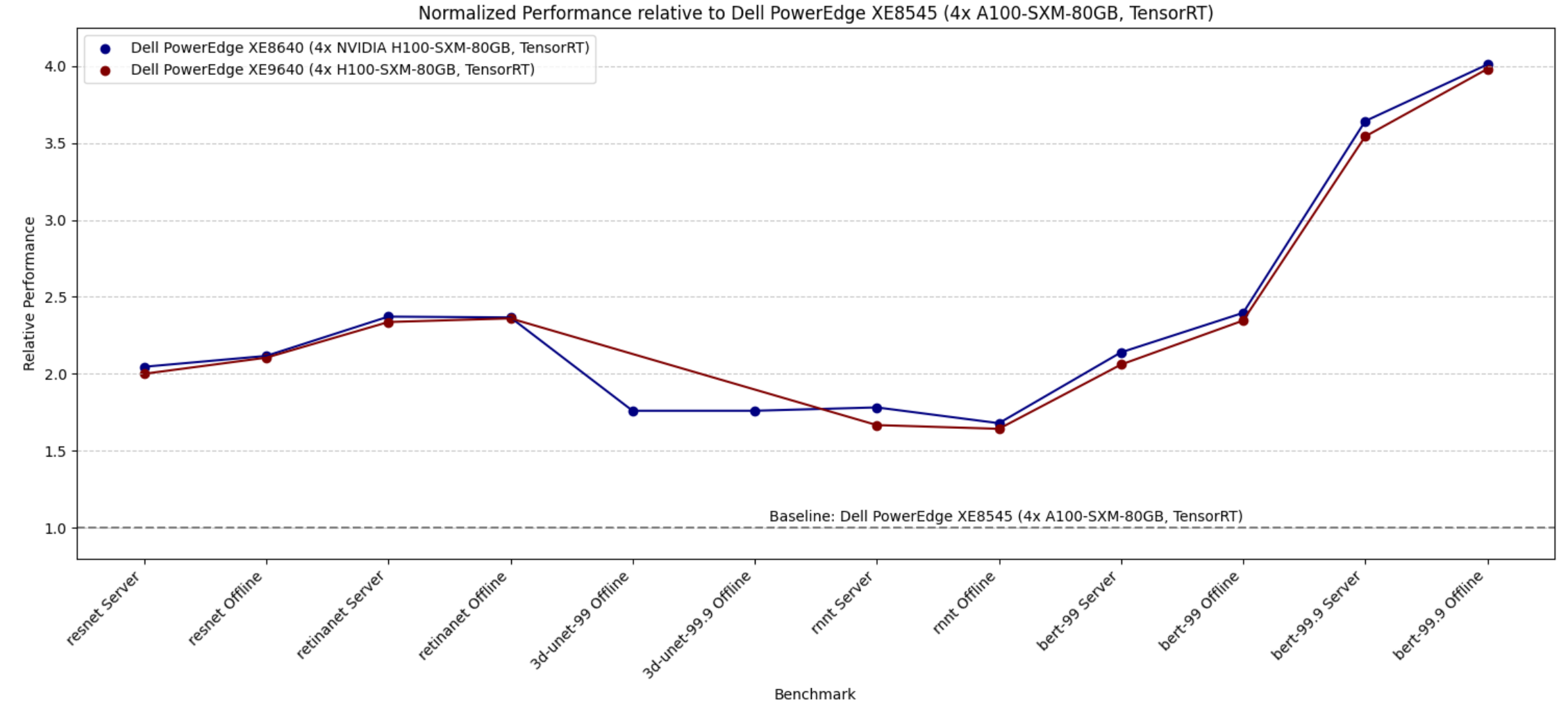
Figure 1. Relative performance of PowerEdge XE8640 and PowerEdge XE9640 servers using the PowerEdge XE8545 server as a baseline reference (for the Y axis, the higher the better)
The graph shows that the relative performance improvement from the PowerEdge XE8545 server with four NVIDIA A100 SXM Tensor Core GPUs as a baseline (from MLPerf Inference v3.0) and the new generation severs such as the PowerEdge XE8640 and PowerEdge XE9640 servers using NVIDIA H100 Tensor Core GPUs. The improvement in performance is substantial, as evident from the graph. End users can derive a two- to four-times improvement in performance for different tasks in MLPerf Inference benchmarks. We see relatively higher performance with BERT benchmarks because of the NVIDIA H100 GPU’s FP8 support.
Comparing air-cooled and liquid-cooled servers
The following figure shows the raw performance of PowerEdge XE8640 and XE9640 servers; this graph and the following graph provide relative scores. The graph includes all the benchmarks in the Inference closed data center suite that we submitted. Note that different benchmarks have different scales. All the benchmarks are presented in one graph, therefore, the y-axis is expressed logarithmically.
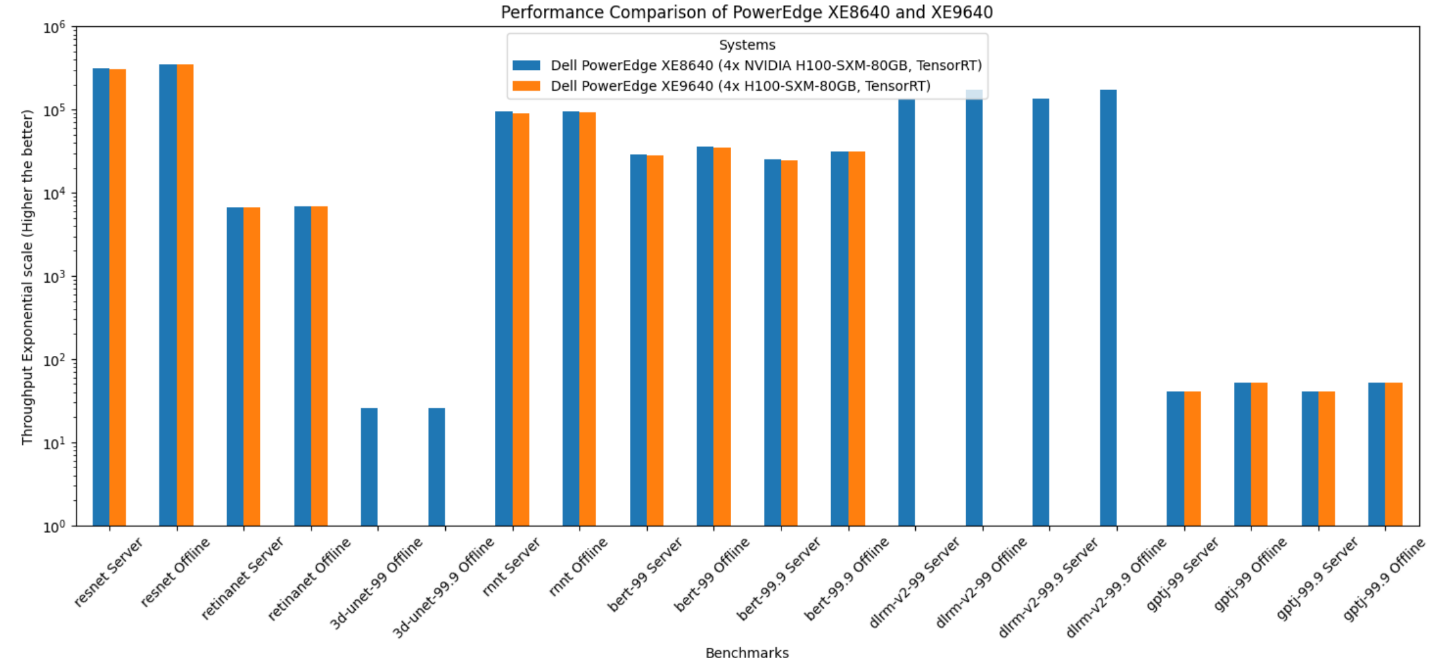
Figure 2. Performance of PowerEdge XE8640 and PowerEdge XE9640 servers
PowerEdge XE8640 and XE9640 servers are both great choices for inference workloads with four NVIDIA H100 SXM Tensor Core GPUs. The PowerEdge XE9640 server is a liquid-cooled server and the PowerEdge XE8640 server is an air-cooled server. The following figure shows the difference in performance between these systems; they both performed optimally. Both systems have similar effective throughput and render excellent performance as the CPU and GPU configurations are the same.
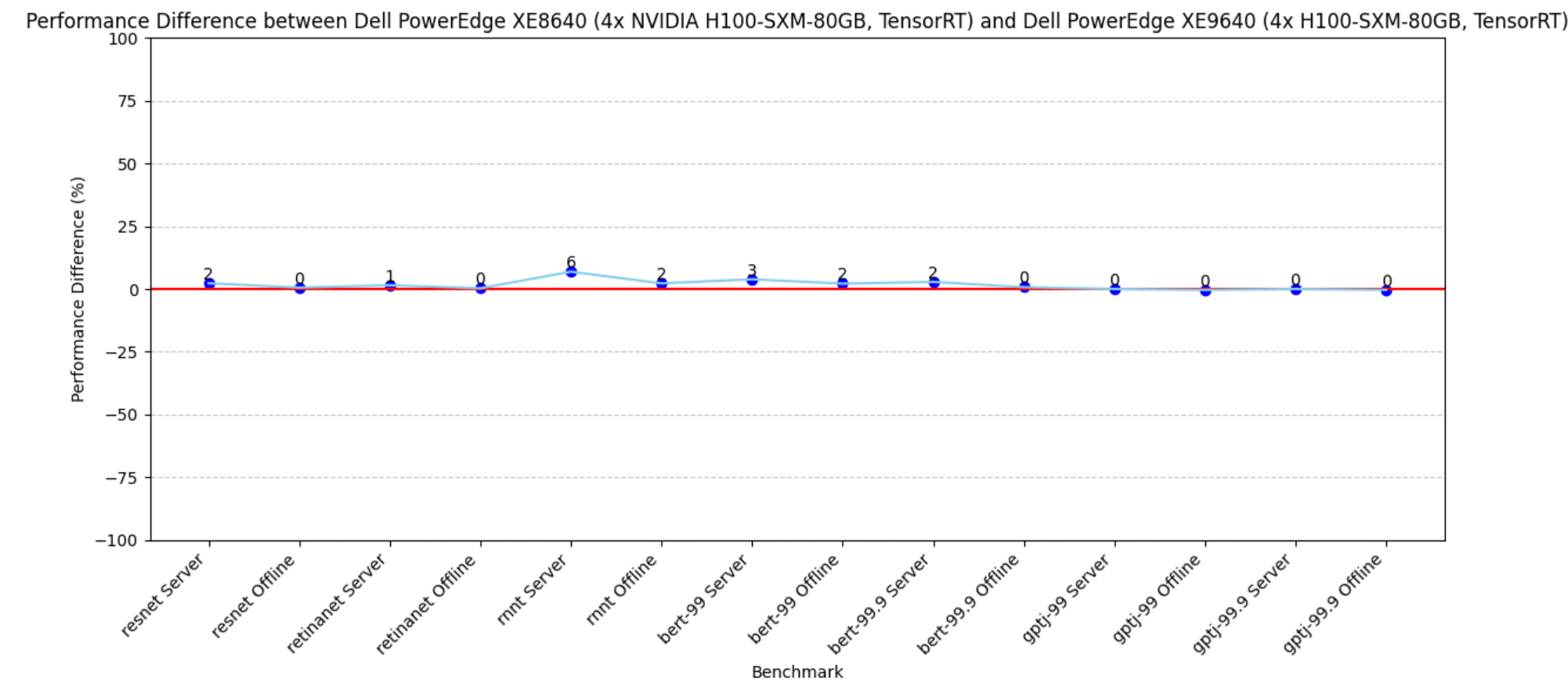
Figure 3. Performance difference between PowerEdge XE9640 and XE8640 servers using the PowerEdge XE9640 server as a baseline
Impact of SXM over PCIe form factors
The following figure shows the performance of the PowerEdge R760xa server with NVIDIA H100 PCIe GPUs as the baseline and shows the performance improvement of PowerEdge XE9640 and PowerEdge XE8640 servers with NVIDIA H100 Tensor Core SXM GPUs. The graph demonstrates that the PowerEdge XE8640 server with NVIDIA H100 SXM GPUs performs approximately 1.25 to 1.7 times better than the PowerEdge R760xa server with NVIDIA H100 PCIe GPUs.
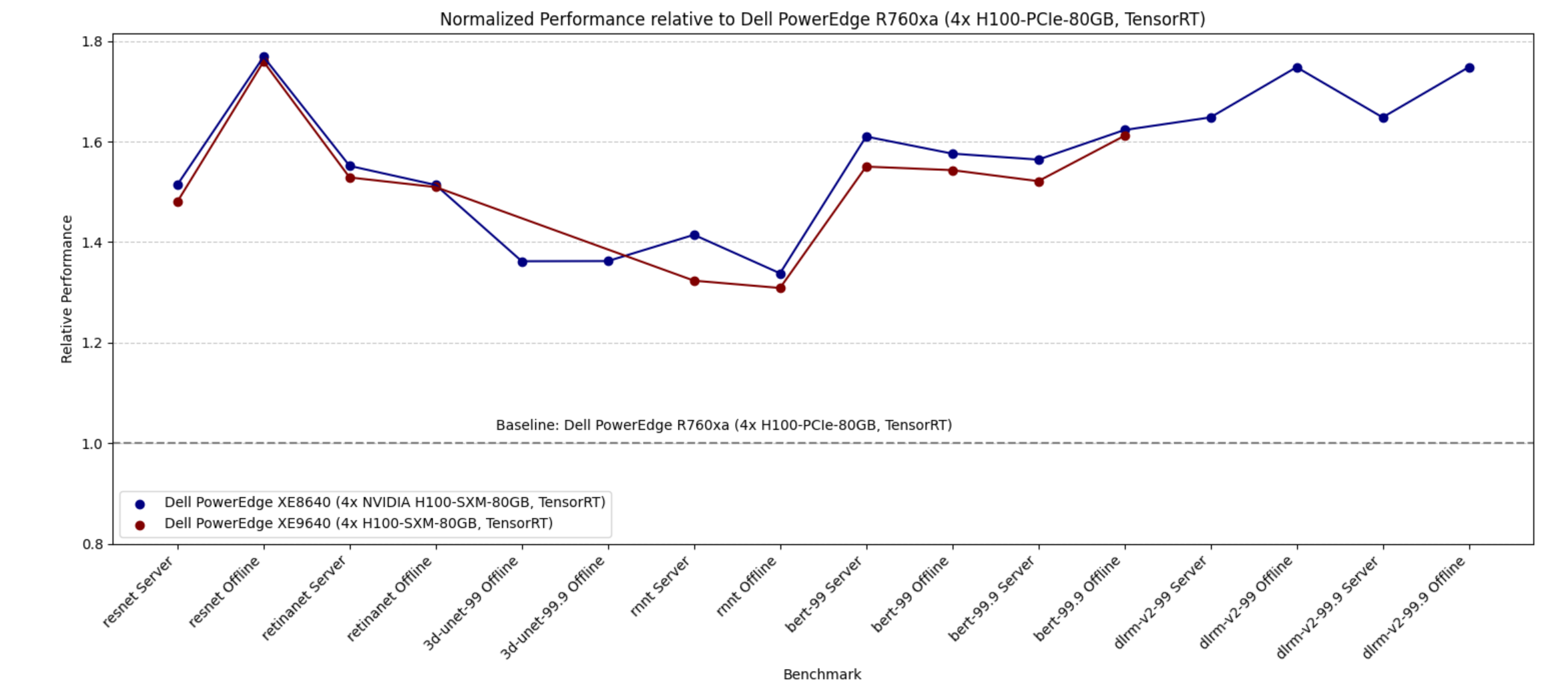
Figure 4. Performance difference between PowerEdge XE9640 and XE8640 servers with 4x H100 SXM and PowerEdge R760xa server with 4x H100 PCIe as a baseline
Because the NVIDIA H100 SXM GPUs have higher Thermal Design Power (TDP), if high performance is imperative, then using NVIDIA SXM GPUs is a great choice.
Comparing efficiency of new and previous generation servers
The following figure shows the performance of the previous generation PowerEdge XE8545 server with NVIDIA A100 SXM GPUs compared to the new generation servers such as the PowerEdge R760xa server with the NVIDIA H100 PCIE form factor and the PowerEdge XE8640 and XE9640 servers with the NVIDIA H100 SXM form factor. We see that all the new generation servers rendered higher performance. Furthermore, our new generation PowerEdge R760xa server with four NVIDIA H100 PCIe GPUs is more power efficient than our previous generation PowerEdge XE8545 server with four NVIDIA A100 SXM GPUs. This result is because NVIDIA A100 SXM GPUs have higher TDP relative to the NVIDIA H100 PCIe GPU.
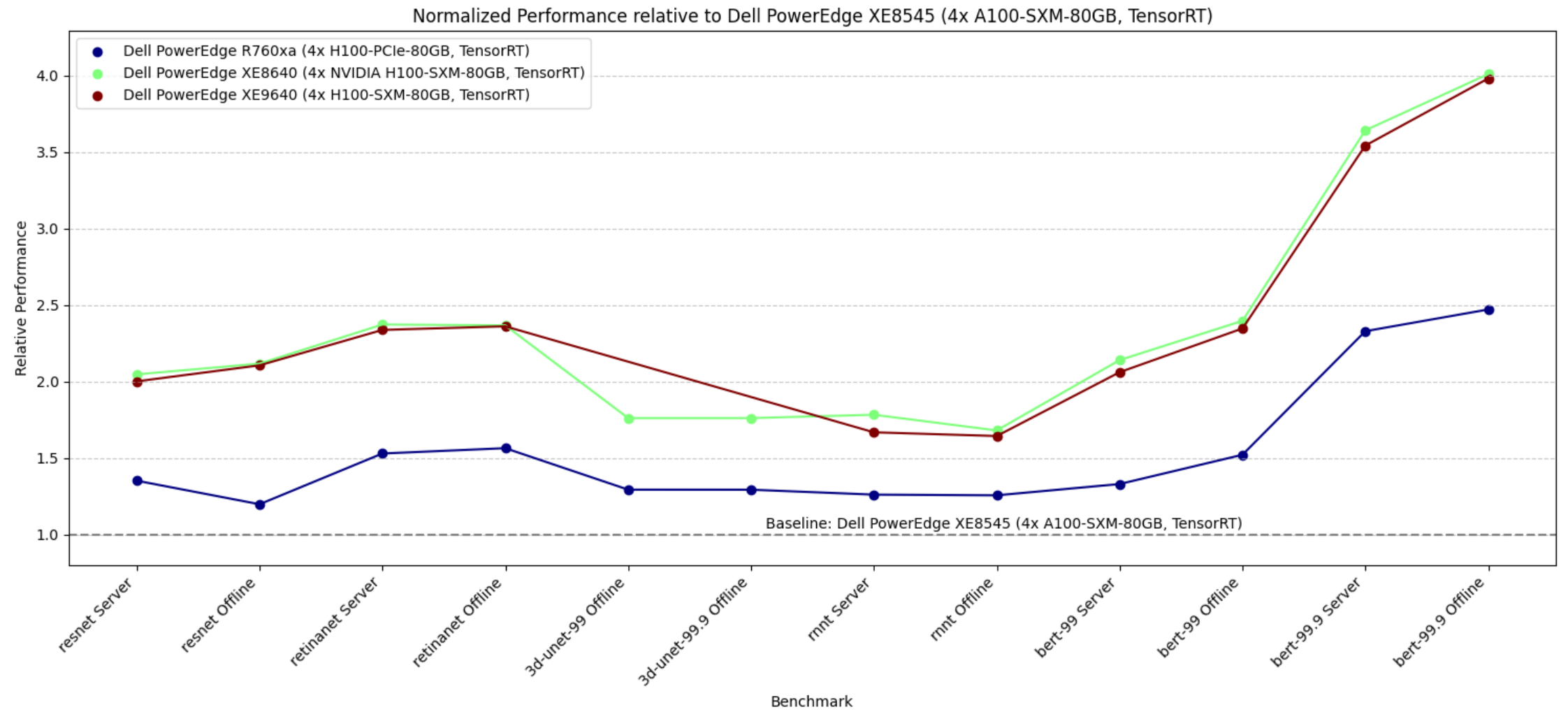
Figure 5. Relative performance of PowerEdge R760xa, PowerEdge XE9640, and PowerEdge XE8640 servers using the PowerEdge XE8545 server as a baseline
Hardware overview
The following sections describe the system components. The appendix lists the system configurations in the benchmark.
Dell PowerEdge XE8640 server
The PowerEdge XE8640 server is an air-cooled 4U server that accelerates traditional AI training and inferencing, modeling, simulation, and other high-performance computing (HPC) applications with optimized compute, turning data and automating insights into outcomes with a four-way GPU platform. Its powerful architecture and the power of two 4th Generation Intel Xeon processors with a high core count of up to 56 cores and the latest on-chip innovations to boost AI and machine learning operations.
The following figure shows the PowerEdge XE8640 server:
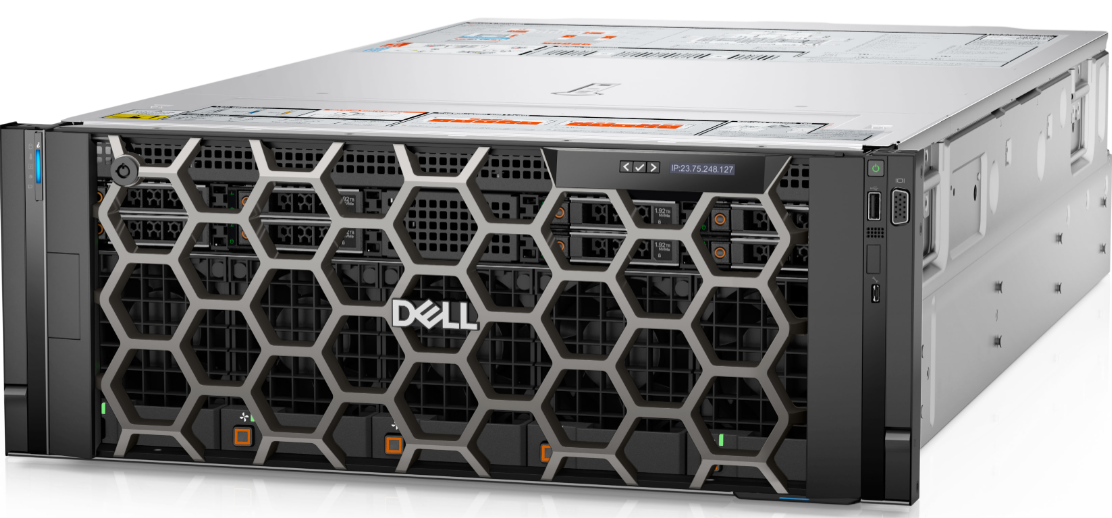
Figure 6. Dell PowerEdge XE8640 server
Dell PowerEdge XE9640 server
The PowerEdge XE9640 server is a purpose-built direct liquid-cooled (DLC) 2U server for AI and HPC workloads. NVIDIA NVLink and Intel Xelink technologies in the PowerEdge XE9640 server allow seamless communication between the GPUs, pooling their memory and cores to tackle memory-coherent workloads such as large language models (LLM) efficiently.
The following figure shows the PowerEdge XE9640 server:

Figure 7. Dell PowerEdge XE8640
NVIDIA H100 Tensor core GPU
The NVIDIA H100 GPU is an integral part of the NVIDIA data center platform. Built for AI, HPC, and data analytics, the platform accelerates over 3,000 applications, and is available everywhere from the data center to the edge, delivering both dramatic performance gains and cost-saving opportunities. The NVIDIA H100 Tensor Core GPU delivers unprecedented performance, scalability,
and security for every workload. With NVIDIA® NVLink® Switch System, up to 256
NVIDIA H100 GPUs can be connected to accelerate exascale workloads, while the dedicated
Transformer Engine supports trillion-parameter language models. The NVIDIA H100 GPU uses
breakthrough innovations in the NVIDIA Hopper™ architecture to deliver industry-leading conversational AI, speeding up large language models by 30 times over the previous generation.
The following figure shows the NVIDIA H100 PCIe accelerator:
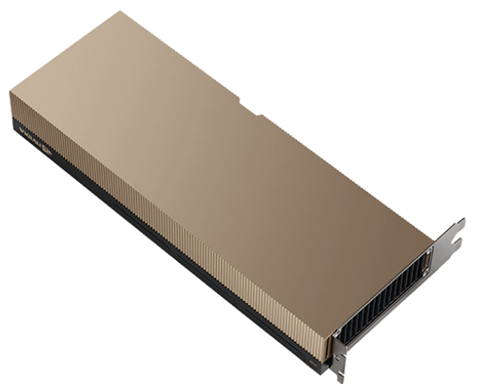
Figure 8. NVIDIA H100 PCIe accelerator
The following figure shows the NVIDIA H100 SXM accelerator:
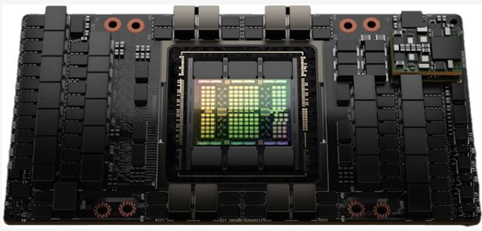
Figure 9. NVIDIA H100 SXM accelerator
Conclusion
The key takeaways include:
- Both the Dell PowerEdge XE8640 and Dell PowerEdge XE9640 servers are an excellent choice for inference. The performance of the air-cooled PowerEdge XE8640 server is almost identical to the liquid-cooled PowerEdge XE9640 server. While the PowerEdge XE9640 server is a 2U server, it requires additional cooling unit attachments. It is a good choice if there are space and temperature constraints, otherwise the PowerEdge XE8640 server is a great choice.
- PowerEdge XE8640 and PowerEdge 9640 servers have received several top titles. They are clear leaders in inference compute.
- New generation PowerEdge XE8640 and PowerEdge XE9640 servers with NVIDIA H100 GPUs have delivered 2- to 4-times improvement relative to the previous generation PowerEdge XE8545 server with NVIDIA A100 GPUs. Upgrading from the PowerEdge XE8545 sever would render higher performance.
- The PowerEdge XE9640 and PowerEdge XE8640 servers with four NVIDIA H100 SXM form-factor GPUs are significantly more effective than the PowerEdge R760xa server with four NVIDIA H100 PCIe GPUs by a factor of 1.25 to 1.7 times.
Our submission results to MLPerf Inference since its inception have continuously demonstrated significant performance improvements. We have submitted to different tasks to provide customers with a wide spectrum of possible results to review. This round marked a new and the first submission to MLPerf with PowerEdge XE8640 and XE9640 servers. Customers can rely on these high compute machines for their fast/low latency inference needs. If constrained by TDP or other factors, the PowerEdge R760xa server with the PCIe form factor is an excellent choice on which to run inference workloads.
Appendix
The following table lists the system configuration details for the servers described in this blog:
Table 1. System configurations
| Dell PowerEdge XE 8640 (4x NVIDIA H100-SXM-80GB, TensorRT) | Dell PowerEdge XE 9640 (4x H100-SXM-80GB, TensorRT) | Dell PowerEdge R760xa (4x H100-PCIe-80GB, TensorRT) | Dell PowerEdge XE 8545 (4x A100-SXM-80GB, TensorRT) |
MLPerf submission ID | 3.1-0066 | 3.1-0067 | 3.1-0064 | 3.0-0011 |
MLPerf system ID | XE8640_H100_SXM_80GBx4_TRT | XE9640_H100_SXM_80GBx4_TRT | R760xa_H100_PCIe_80GBx4_TRT | XE8545_A100_SXM4_80GBx4_TRT |
Operating system | Rocky Linux 9.1 | Ubuntu 22.04 | Ubuntu 20.04.4 | Ubuntu 22.04 |
CPU | Intel Xeon Platinum 8480 | Intel Xeon Platinum 8480+ | Intel Xeon Platinum 8480+ | AMD EPYC 7763 |
Memory | 1 TB | 1 TB | 2 TB | 2 TB |
GPU | NVIDIA H100 SXM 80 GB | NVIDIA H100 PCIE 80 GB | NVIDIA A100 SXM 80 GB CTS | |
GPU count | 4 | |||
Software stack | TensorRT 9.0.0 CUDA 12.2 | TensorRT 8.6.0 CUDA 12.2 | ||
MLCommons results
MLPerf system IDs:
- ID 3.0-0011
- ID 3.1-0064
- ID 3.1-0066
- ID 3.1-0067
Note: We reran the RetinaNet Offline benchmark for the PowerEdge R760xa server and the DLRMv2 benchmark for the PowerEdge XE8640 server to reflect the correct performance that the servers can render. Only these two results are not official due to MLCommons rules.
The MLPerf™ name and logo are trademarks of MLCommons Association in the United States and other countries. All rights reserved. Unauthorized use strictly prohibited. See www.mlcommons.org for more information.


